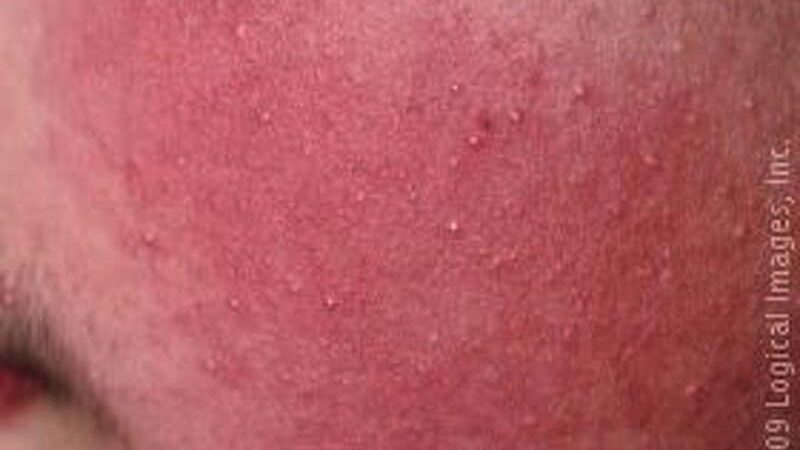Keratosis Pilaris Rubra Faceii (KPRF) is a specific subtype of keratosis pilaris (KP) that primarily affects the face. It is characterized by red, inflamed bumps, often accompanied by flushing and blushing of the facial skin. KPRF can resemble conditions like rosacea due to its redness and sensitivity, but it’s important to note that they are distinct conditions.
Managing Keratosis Pilaris Rubra Faceii involves a combination of gentle care, moisturization, and avoiding triggers that can exacerbate redness.

KPRF is typically genetic in nature and may be more common in people with a family history of KP. The condition is not usually painful or itchy, but it can be cosmetically bothersome to some individuals due to its appearance. KPRF is generally considered a benign and harmless skin condition.
These bumps are caused by the buildup of keratin, a protein that helps protect the skin. In KPRF, these bumps are particularly prominent on the facial skin, leading to a rough and bumpy appearance.
Here are some tips and approaches to consider:
1.Gentle Cleansing:
- Use a mild, fragrance-free cleanser that won’t strip your skin’s natural oils. Avoid harsh or abrasive cleansers that can worsen irritation.
2. Moisturization:
- Choose a lightweight, non-comedogenic moisturizer to keep your skin hydrated. Look for products with soothing ingredients like ceramides, hyaluronic acid, and niacinamide.
3. Sun Protection:
- Sunscreen is crucial to protect sensitive skin from sun exposure, which can worsen redness and irritation. Opt for a broad-spectrum sunscreen with at least SPF 30 and wear protective clothing and hats when in the sun.
4. Avoid Triggers:
- Identify and avoid triggers that can worsen redness, such as extreme temperatures, spicy foods, alcohol, and certain skincare products with harsh ingredients.
5. Topical Treatments:
- Consult a dermatologist for appropriate prescription treatments, such as topical antibiotics, azelaic acid, or mild topical corticosteroids. These can help reduce inflammation and redness.
6. Gentle Exfoliation:
- Mild chemical exfoliants like glycolic acid or lactic acid can help improve skin texture and reduce the appearance of bumps. Avoid harsh scrubs or physical exfoliants that can irritate the skin.
7. Lifestyle Factors:
- Manage stress, as stress can exacerbate skin conditions. Engaging in stress-reduction techniques like meditation or yoga may help.
8. Dermatologist Consultation:
- If you’re unsure about managing KPRF or your symptoms are severe, consider consulting a dermatologist. They can provide personalized recommendations and prescribe treatments tailored to your skin’s needs.
It’s important to approach managing KPRF with patience, as improvements may take time. Every individual’s skin is unique, so finding the right combination of skincare products and practices may involve some trial and error. Working with a dermatologist can provide you with the most effective and personalized guidance for managing Keratosis Pilaris Rubra Faceii.
